Are you troubled by what it costs to heat and cool your home? Are you concerned about sun damage to your furnishings? Perhaps you have young kids, worried they could be injured if a window were to break. Or maybe you’re in a region prone to hurricanes.
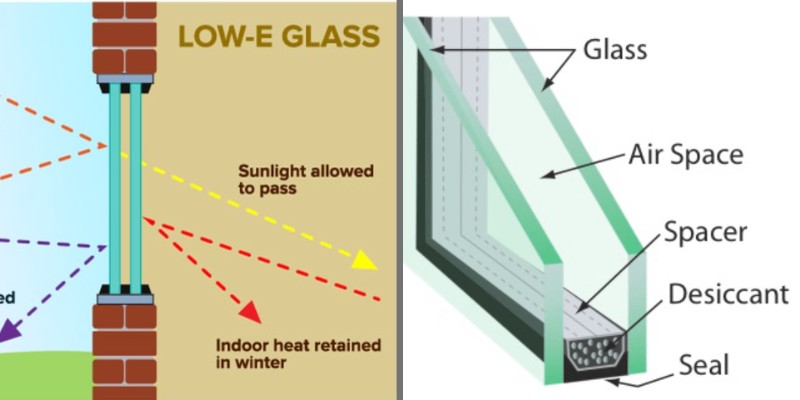
In all these cases, installing high-quality windows can ease your mind. They can lower your monthly utility bills, buffer noise, and block the sun’s harmful rays. Moreover, some styles can resist fire or reduce your homeowners insurance.
Welcome to my window showroom! Here I cover 10 different types of window glass, their pros and cons, and ideal applications.
Note – In this post, I use the industry term “float glass” for regular or standard glass.
1) Insulated Glass (Double Glazing)
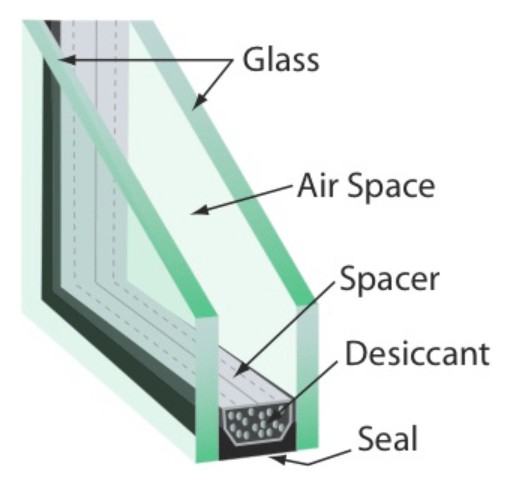
When shopping for insulated glass, you’ll find that it comes in units called “IGUs.” Each unit is a sealed system with codependent parts.
A double glazing IGU has two panes of glass separated by a spacer bar with an inert gas between them. The gas-filled cavity inhibits energy transfer through the glass, insulating your home.
The extent of insulation depends on glass thickness and the amount of space between the panes. You can also have the glass tinted or glazed for added privacy. Another term for double glazing is double-pane.
Benefits
- insulated glass has excellent durability and longevity
- curbs heat loss during winter and heat gain in summer
- dampens outside noise
- condensation-free since moisture can’t build between the panes
- can be coated for improved insulation
- increases your home value
Drawbacks
- damaged glass can’t be repaired
- expensive
Let’s say the glass gets cracked. In that case, you’ll need to replace the entire IGU. While a glazier could give you a new pane, they can’t replenish the inert gas.
Also, you’ll pay more for an IGU than single-pane glass. Still, you’ll offset the initial cost by having lower utility bills.
Best Uses for Insulated Glass
- windows with northern or southern views
- bedrooms
- drafty windows
- skylights
2) Low-E Glass
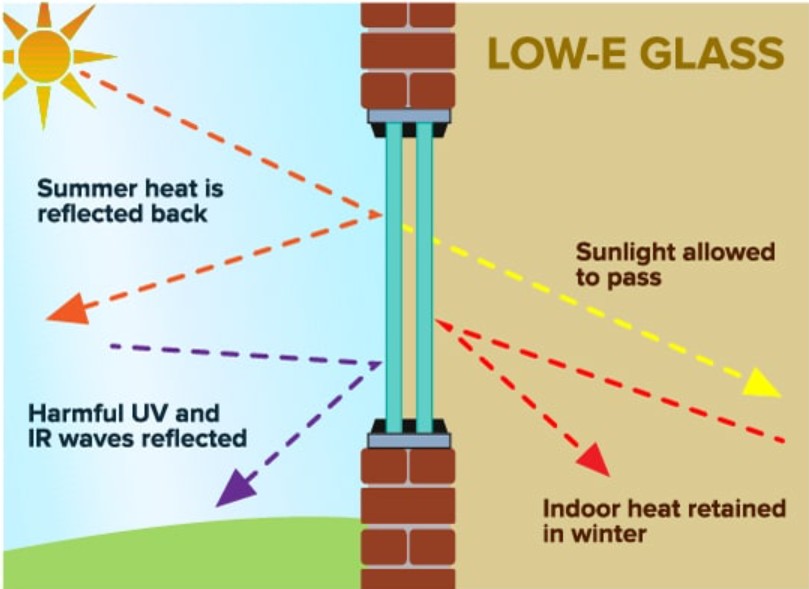
The “E” in low-E glass stands for “emissivity,” a measure of how much a surface lets heat pass through. Low-E glass has a thin, invisible coating, impeding the passage of the sun’s infrared and ultraviolet (UV) rays.
So, during cold months, low-E glass keeps warm air inside your home. Then, in summer, solar rays bounce off the glass, preventing heat gain. In this way, low-E glass helps to moderate room temperatures.
Coating Options
- Passive or Hard-Coat – maximizes heat entry through a window, reducing your need to raise the thermostat in winter. Passive coatings are fused to hot glass, creating a durable bond.
- Solar Control or Soft-Coat – limits solar heat gain, easing your cooling system’s workload. This treatment goes on at room temperature, producing a soft finish, followed by lamination.
Benefits
- low-E glass is scratch-resistant
- furnishings are less subject to UV discoloration
- filters infrared rays, trimming your heating and cooling bills
- moderately priced, less than double-pane windows
Drawbacks
- hampers natural light
- not noise-reducing
Low-E glass lessens the entry of visible light, the amount varying by product specifications. So, if a room is already dim, the glass can make it appear even darker.
Best Uses for Low-E Glass
- rooms with ample natural or artificial light
Buying Tip
Base your coating choice on your local climate and whether your furnishings need UV shielding.
- hard-coat – best for frigid winters and furniture vulnerable to sun damage
- soft-coat – great for moderately cold winters and intensely hot summers
3) Laminated Glass
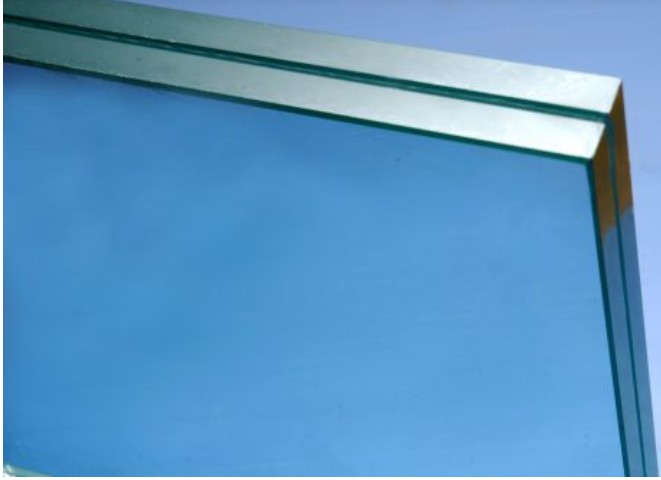
This is a type of “safety glass.” It has a polymer resin sandwiched between two glass panels, bonded together at high heat and pressure. The lamination process makes the glass eight times stronger than float glass!
Moreover, if the window breaks, the glass fragments stay in place versus shattering.
Benefits
- laminated glass withstands high-speed winds
- defies window tampering by robbers
- superb noise insulation
- protects furnishings from UV discoloration
- easy installation
- excellent longevity, up to 25 years
Drawbacks
- Since the glass is heavy, the window frame and wall may need reinforcement.
- Laminated glass doesn’t suit oversized or oddly-shaped windows.
- It’s pricey.
Best Uses for Laminated Glass
- families with pets or young children
- dwellings near blaring airports and city noise
- homes abutting golf courses
- skylights
4) Hurricane Resistant Glass
This safety glass can endure the battering winds, pounding rain, and flying debris evoked by Category 5 hurricanes. The glass is laminated and framed in a hardy casing for anchoring to a wall. The strongest frames are steel, aluminum, or reinforced vinyl.
Due to the lamination technique, the glass holds broken shards in place in a spider-web fashion. This ability comes from the polymer resin layered between the panes.
Above all, hurricane-resistant windows aim to prevent building collapse. A structure starts folding in response to dramatic pressure changes around doors and windows, causing sudden blow-outs. Next, walls flatten and a building falls.
Hurricane-resistant glass can keep your windows and doors intact while fighting a tropical storm. In turn, your home has a better chance of holding its ground.
Benefits
- built to outlast winds of 200 miles per hour
- stops shattered fragments from being airborne
- restricts UV rays
- energy-efficient and noise-buffering
- comes in varied sizes and designs
- can reduce your homeowner insurance premiums
- worth its cost in high-risk locations
Drawbacks
- The surface can turn yellow with time.
- Thick glass can have mildly compromised clarity.
Buying Tips
Make sure a given product meets your local building codes. Highly-rated windows have superior endurance against fierce winds. For more protection, consider installing hurricane shutters.
5) Single-Pane Glass
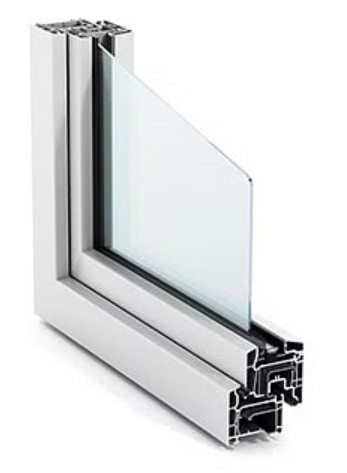
Was your home built before 1950? If so, your windows may be single-pane, consisting of one glass sheet. Each casing may also have a removable panel called a “storm window.”
While single-pane windows have several shortcomings, there are instances when retaining them is warranted.
For example, if you have a historic home with period windows, you’ll want to maintain their character. Or your windows could be one-of-a-kind, unique to your home design. This is particularly the case with artistic types, such as stained glass.
Benefits
- sold in many materials and styles
- may suit mild climates
- relatively lightweight
- least expensive of all window glass
Drawbacks
- single-pane glass doesn’t soften noise
- subject to gaps and air leaks around caulking
- poor energy efficiency, raising utility bills by 25 percent
Best Use for Single-Pane Glass
- windows with treasured, irreplaceable designs
How to Improve Single-Pane Performance
- cover with window film
- apply a low-E coating to the existing glass
- pair with hefty window treatments, such as drapes
- install window inserts, panels resembling storm windows
For detailed information on window inserts and window treatments, see this post.
6) Tempered Glass
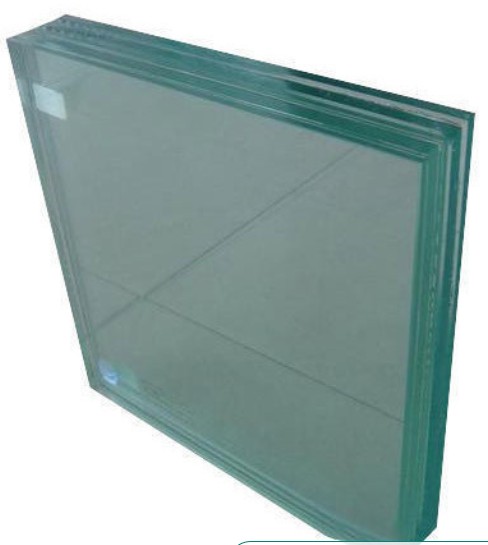
Laminated and tempered glass are cousins, differing in two ways.
First, tempered glass has multiple layers joined by a polymer resin. Secondly, the production process ends with rapid, high-pressure cooling called “tempering.” Although the surface glass cools in seconds, the center takes longer, making it rigid and sturdy.
Due to this final step, tempered glass exceeds laminated glass in strength. If it does break, the glass leaves its frame in small, blunt fragments. Cleanup is easy with a broom and dustpan or vacuum.
Conversely, when float glass fractures, its flying pieces are large, jagged, and sharp. Thus, broken tempered glass has a lower risk of lacerating those nearby. Some building codes require tempered window glass.
Benefits
- exceptional clarity
- resists scratches, blows, and forceful winds
- muffles neighborhood noise
- can be clear, frosted, textured, or patterned
- safer than float glass
- cheaper than laminated glass
Drawback
- costs 25 percent more than float glass
Best Uses for Tempered Glass
- windows next to outer doors that tend to slam
- casings low to the floor
- windows around indoor pool areas
- houses near golf courses
- skylights
7) Tinted Glass
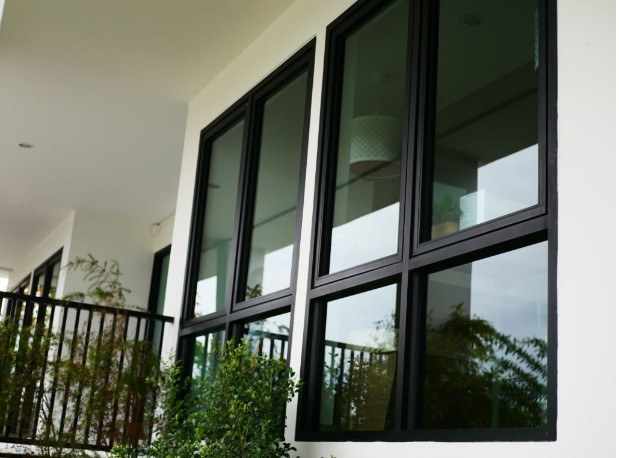
Colored glass windows are both practical and attractive! Manufacturers tint the glass by adding small amounts of metal oxides to the panes. Distributing the compounds evenly gives the glass a uniform hue.
Popular choices for home windows are blue, green, grey, and bronze. You can also customize glass thickness which affects color tone. For instance, as pane depth increases, colors appear darker. Tinting is available for float, tempered, laminate, and insulated glass.
Colored glass absorbs the sun’s thermal rays. In turn, it can slash solar gain in summer by 30 to 45 percent. Moreover, tinting fortifies window glass.
Benefits
- tinted glass bestows privacy
- obscures onlookers’ views, deterring burglars
- scratch-resistant and durable
- markedly lowers your summer cooling bills
- reduces UV fading on floors, fabrics, and furniture
- banishes glare on electronic screens
- low-maintenance
Drawbacks
- alters your color perception of outside objects
- costs more than float glass
Best Uses for Tinted Glass
- home photography or painting studios
- rooms that readily overheat in summer
- bedrooms, family rooms, and living rooms
- home offices
- wherever privacy and visual security are paramount
8) Mirrored Glass
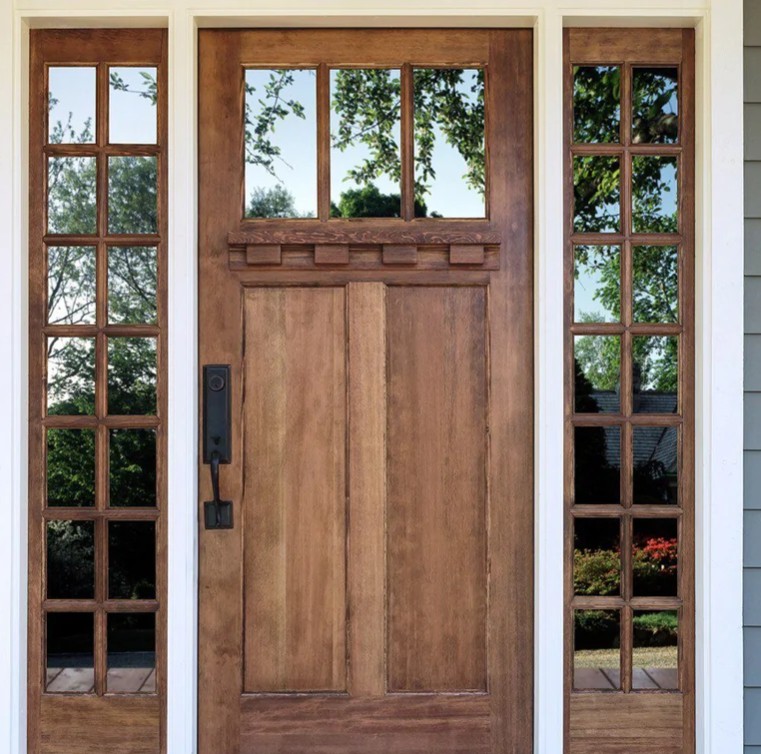
When you have mirrored glass on your windows or doors, folks won’t peer inside your home. Instead, they’ll see themselves reflected in your panes. Meanwhile, you have a clear view outside. For this reason, mirrored glass is also called one-way window glass.
A mirrored glass pane has a reflective metal coating sealed on the outside. The surface is designed to resist peeling and scratches.
An advanced version is the “heat mirror window,” new to the industry since 2016. It consists of heat-reflective glass, having superb insulating properties.
Heat Mirror Window Design
This model has two glass panes with a metallic film and spacer bar between them. The film has a mirrored finish, created by microscopic metal particles. An inert gas fills the space. Then, the entire window unit is sealed and fitted to a vinyl frame.
In summer, the mirrored film deflects solar heat outside your home. Then, during cold months, the glass keeps warm air from escaping. Meanwhile, the panes hamper UV rays while allowing natural light to pass through.
Benefits
- heat mirror windows are highly durable
- reduce heating and cooling costs
- resist condensation on windows
- shield flooring and upholstery from UV fading
- repel neighborhood sounds
- maintenance-free
- long-lasting
Drawbacks
- not widely available, although the market is expanding
- pricey due to the advanced technology
Best Uses for Mirrored Window Glass
- rooms needing visual security
- living rooms and bedrooms
- household areas hard to heat or cool seasonally
9) Wired Glass
You’ve probably seen wired glass in the fire exit doors of commercial buildings. It’s also an option for homeowners who want fire-resistant glass for certain windows.
Wired glass is embedded with steel wire mesh, anchoring the glass during breakage in a fire. Moreover, the lattice is a barrier against flames and smoke.
As such, wired glass is another type of safety glass with either square or diamond grids. You can also have the glass tinted or patterned.
“Fire-rated safety wired glass” endures for at least 45 minutes. Meanwhile, firefighters have a chance to arrive and rescue occupants from a burning building. Moreover, the glass is covered with an impact-resistant film.
Benefits
- can be lifesaving in a fire
- resists electric shock
- may thwart burglars after a fire
- cheaper than other types of safety glass
Drawbacks
- Glass breakage exposes sharp wires, risking injury to those nearby.
- Embedding wire in glass weakens it, making fracture more likely.
- The grids distort and obstruct your window view.
- Wired glass is prone to rusting in areas with high humidity and frequent rain.
Best Uses for Wired Glass
- doors and windows in evacuation routes
- windows needing high security
- skylights
Buying Tip
Choose a manufacturer who will size a pane to your measurements, re-certifying the glass after cutting it.
10) Polycarbonate Windows
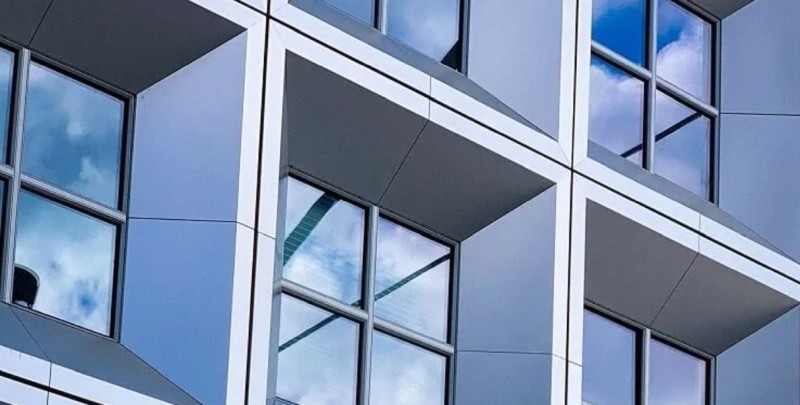
Would you like a nearly unbreakable alternative to window glass? Introducing polycarbonate!
This thermoplastic is bulletproof, being 200 times stronger than glass with half the weight. Polycarbonate sheets can be opaque, clear, or colored.
Clear panels let the sun’s warmth and light penetrate during winter. In summer, they ease the job of your cooling system.
If you install a polycarbonate sheet over an existing glass window, it becomes shatterproof. Moreover, since polycarbonate is flexible, you can bend it to fit oddly-shaped windows.
Benefits
- a breeze to install
- 20 percent more energy efficient than insulated glass
- vandal-proof and shatterproof
- fire-resistant and self-extinguishing
- utmost protection from UV rays
- cheaper than glass
- recyclable
Drawbacks
- easily scratched by fallen branches unless treated
- damaged by abrasive cleaners and organic solvents
- clear panels may yellow and cloud after 10 years
You can prolong the lifespan of a polycarbonate window by treating it with a coating. If a clear panel does get scratched, cloudy, or yellow, you can restore its surface via polishing with a low-heat sanding tool.
All it takes to clean a polycarbonate panel is mild soap, water, and a sponge.
Best Uses for Polycarbonate Windows
- any room you want vandal-proofed
- regions prone to hail storms
- a backyard greenhouse
- homes next to golf courses
- families with young kids
- skylights and sunrooms
Best Windows For Key Purposes
Here’s a summary of the top picks in our showroom lineup based on their strengths.
For optimal energy efficiency, choose from insulated glass, heat mirror windows, polycarbonate panels, and low-E glass. Leading the group in UV shielding is polycarbonate.
Is noise reduction among your priorities? If so, laminated glass is the clear winner. For visual or physical security, consider laminated, tinted, mirrored, and wired glass or polycarbonate panels. Still, wired glass resists fire better than polycarbonate.
Do you need to replace a treasured window featuring a rare design? If so, single-pane glass is the most accommodating.
The strongest impact protection comes from hurricane-resistant glass or polycarbonate. For the greatest longevity, there’s laminated glass. Would you like to boost your home’s curb appeal? In that case, you can order tinting for float, insulated, laminate, and tempered glass.
Lastly, the most budget-friendly are single-pane glass and polycarbonate panels.
Worthy Upgrades
Now, you’re well-acquainted with the different options for window glass. May your new installations bring you greater peace of mind.
Related Posts
- How Much Does 24×30 – 20×30 – 30×30 Concrete Slab Cost?
- How to Split a Room by Adding an Interior Wall
- How to Stop Sliding Doors from Rattling – Causes and Solutions
- Cheap Ways to Heat a Room – Efficient and Budget-Friendly Solutions
- 11 Ways to Get Rid of Cooking Smells in a Small Apartment or House
- 11 Stores and Sites Like IKEA For Affordable Furniture and Home Products
Leave a Reply